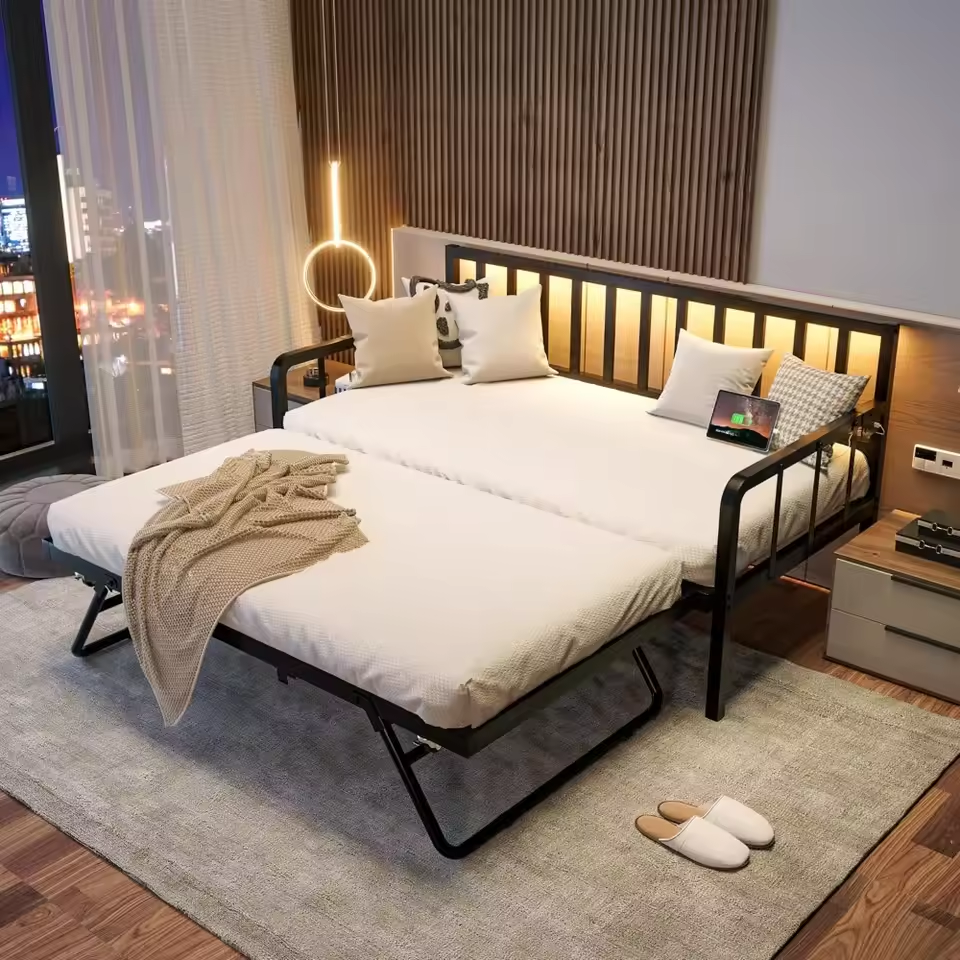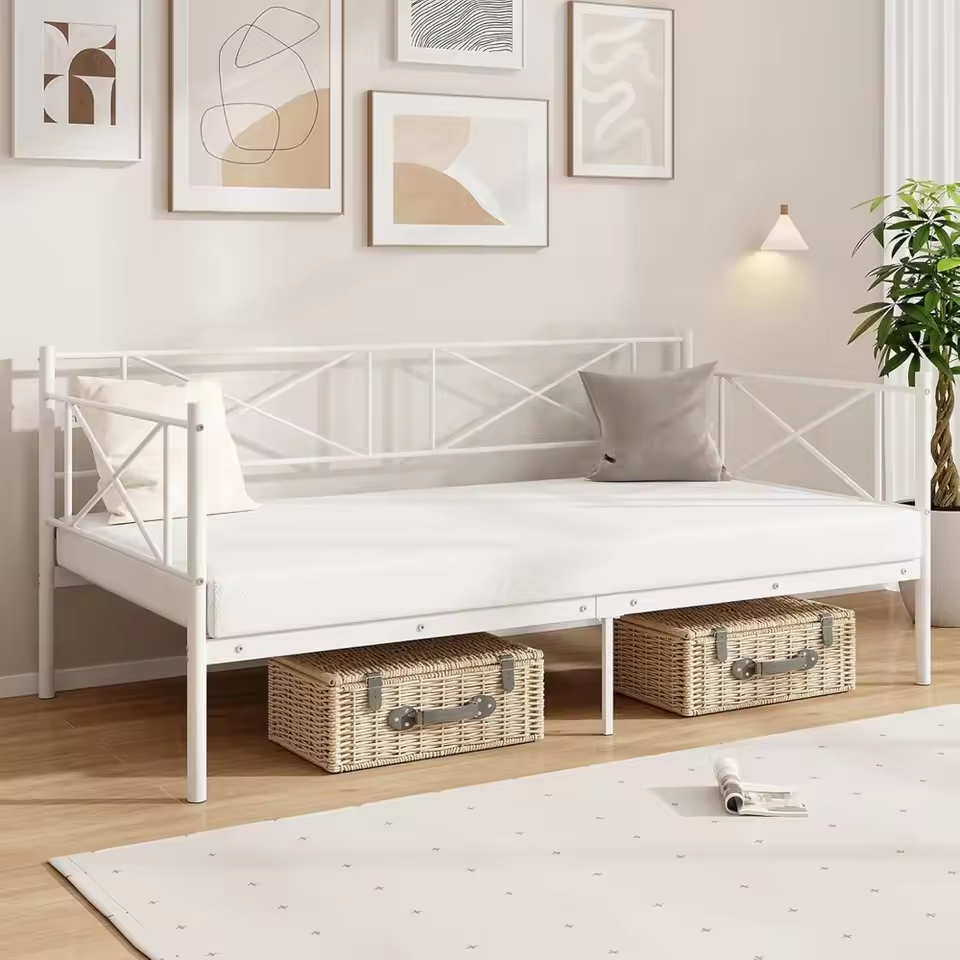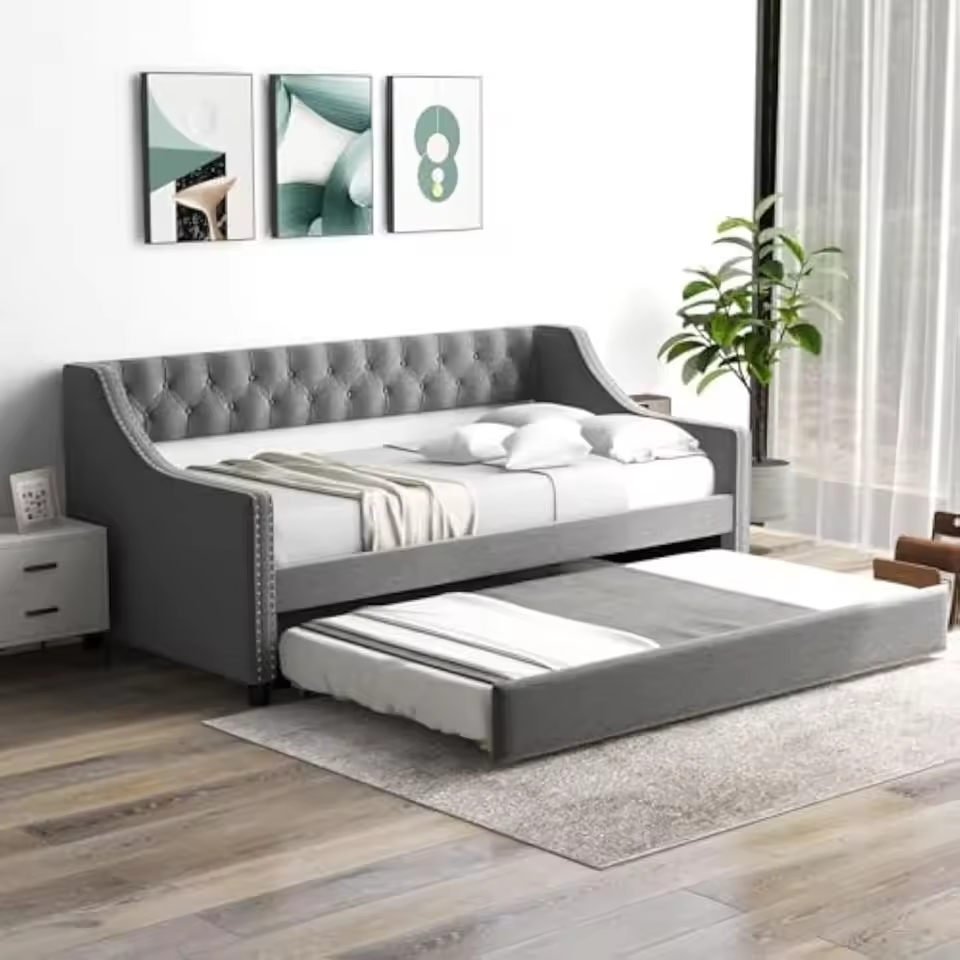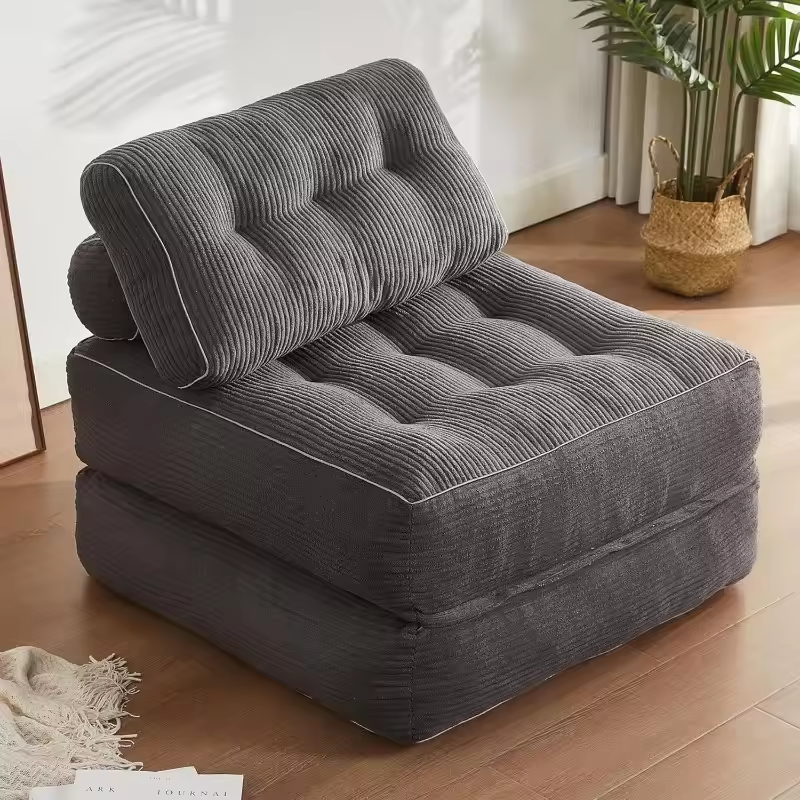Introduction to Day Beds and Sofa Beds
When deciding between a day bed or sofa bed, consider their unique features. Day beds serve as both seating and a sleeping area. They usually assume a rectangular shape and often come with a frame that includes a back and two sides. These beds fit well in smaller rooms or offices, doubling as a couch during daytime hours.
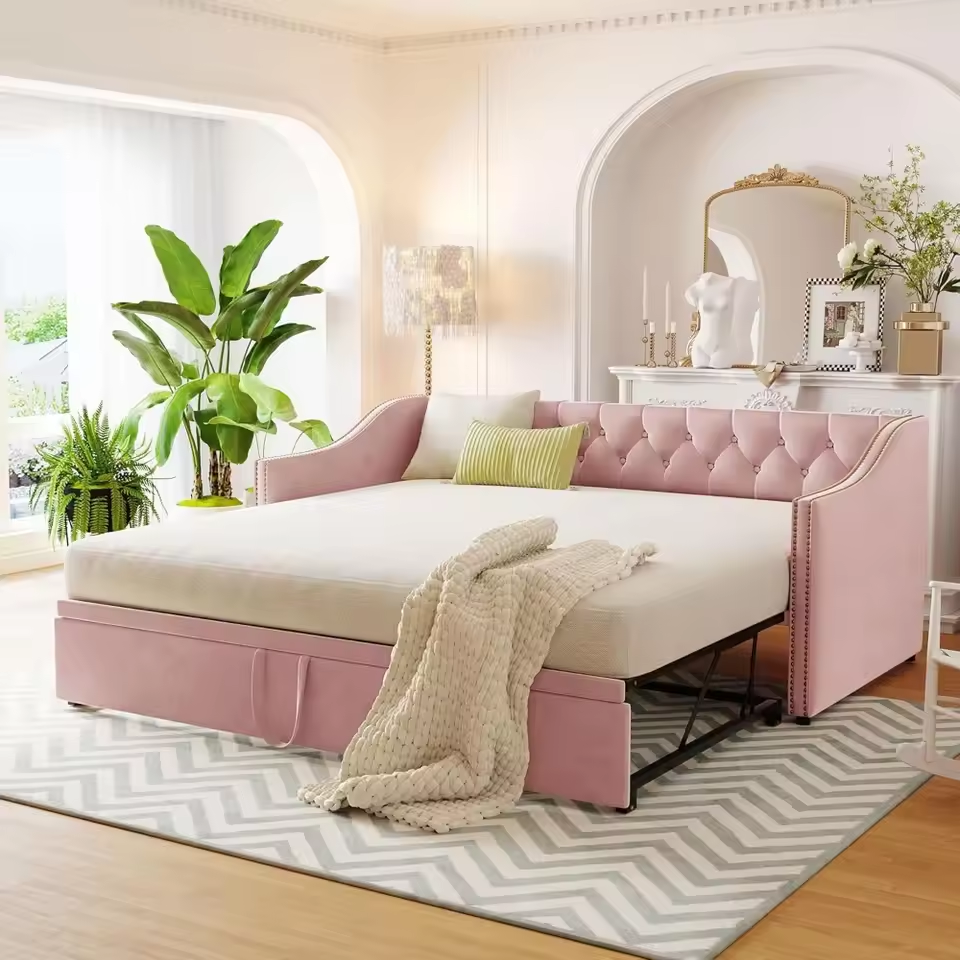
Sofa beds, on the other hand, are sofas that transform into a bed. They come in many styles, from fold-out couches to those with a hidden mattress beneath the cushions. These beds are ideal for homes that often have overnight guests but do not have extra room for a dedicated guest bed.
In essence, the key is to choose based on your space and needs. If you need seating and sleeping space without taking up too much room, consider a day bed. If you often host guests and want a more traditional bed experience, a sofa bed may be better.
Understanding these distinctions will help guide your decision when furnishing your space. As we dive deeper into the differences, pros, and cons of each option in the sections to follow, you will gain a clearer vision of what suits your home best.
Key Differences Between Day Beds and Sofa Beds
When selecting furniture, knowing the key differences between a day bed and a sofa bed can greatly impact your decision-making. Day beds often take up less space because they have a fixed size and shape. People prefer them in smaller rooms or dual-purpose spaces. They typically include a frame with a back and sides, creating a couch-like appearance. Day beds do not convert or fold out but may accommodate a trundle for extra sleeping space.
Sofa beds, in contrast, are more versatile in their design, allowing them to transform from a sofa into a bed. This feature requires a mechanism for conversion, which can range from a simple fold-out to a pull-out mattress. Sofa beds are ideal for living rooms or areas where guests are entertained and might stay overnight. They take the place of a standard sofa while offering the added benefit of converting to a sleeping area when needed.
The choice between a day bed or sofa bed often depends on frequency of use and available space. If the piece will be used daily for sitting, a day bed might offer more comfort and style. If the need for an extra bed arises often, a sofa bed would be more practical. Each has distinct advantages to consider based on your living situation and the functionality you require.
Pros and Cons of Day Beds
Day beds offer unique benefits and have certain limitations. Understanding these can help you decide if a day bed suits your space.
Pros of Day Beds
- Versatility: Day beds are ideal for multi-use spaces, offering seating and sleeping without the need to convert.
- Space-saving: Their compact design is perfect for small apartments or home offices.
- Aesthetics: With frames that often include stylish backs and sides, day beds can enhance room decor.
- Ease of use: No mechanisms to deal with, making them accessible and maintenance-free.
- Guest readiness: Day beds are always ready for a nap or an overnight stay without fuss.
Cons of Day Beds
- Single Function: Unlike sofa beds, they do not convert, which may limit their use in some cases.
- Sleeping space: Typically, they can only sleep one person comfortably, unless equipped with a trundle.
- Mattress thickness: Day beds may require thinner mattresses, impacting sleep comfort.
- Bedding visibility: With no covering at the front, bedding is more visible, which some may find untidy.
- Lack of enclosure: Some may feel that day beds are less cozy than a traditional sofa due to their open design.
Weighing these pros and cons will illuminate whether a day bed meets the criteria for your living situation. Remember to factor in not only space considerations but also how the bed will be used daily.
Advantages and Disadvantages of Sofa Beds
Sofa beds are popular for their dual-purpose design. Yet, they come with their own set of advantages and disadvantages. Deciding if a sofa bed is the right choice for you will depend on these factors.
Pros of Sofa Beds
- Dual Functionality: Sofa beds serve as both a seat and a sleeper. This gives them a winning edge in versatility.
- Space-efficient: For small homes, a sofa bed saves space. No extra room for a guest bed is needed.
- Comfort for Guests: They offer a full mattress. This makes for a more comfortable night’s sleep compared to a couch.
- Ease of Conversion: With a simple mechanism, sofa beds switch from sitting to sleeping quickly.
- Design Choices: Sofa beds come in many styles. They can match a wide range of interior decors.
Cons of Sofa Beds
- Weight and Bulk: They can be heavy. Moving them around is often hard.
- Complex Mechanisms: Opening and closing the sofa bed can be tricky. It may require strength and practice.
- Mattress Quality: Some come with thin mattresses. This can lead to discomfort over time.
- Frequent Usage: Daily conversion from sofa to bed can wear out the mechanism faster.
- Cost: Sofa beds are often pricier than day beds. They can strain your budget if you are not prepared.
Choosing between a day bed or sofa bed requires careful thought. Gauge your space, guest frequency, and budget. Prioritize the features that are most important to your lifestyle. This will lead you to the best option for your home.
Understanding Space Requirements and Functionality
When contemplating a day bed or sofa bed, space efficiency and functionality are paramount. Before making a decision, assess the available space in your room and consider how the furniture will serve your lifestyle.
Evaluating Room Size
Evaluate the room’s dimensions to ensure the bed’s size aligns with the space. A day bed, with its fixed size, might suit limited spaces such as small guest rooms or home offices. In contrast, a sofa bed can be ideal in a larger living room where it will function as a seating area during the day and transform into a bed for guests at night.
Considering Everyday Use
Think about daily use needs. If the primary use is seating, ensure that comfort isn’t compromised. Day beds provide a sturdy, consistent seating area. Sofa beds, due to their folding mechanisms, may vary in seating comfort. Moreover, frequent folding can hasten wear and tear, making day beds a more durable option for everyday use.
Assessing Functionality for Guests
For those who often host overnight guests, functionality is critical. Sofa beds boast a traditional bed setup, typically offering guests a more comfortable sleeping surface. Day beds, while convenient, may not always provide the same level of comfort unless they come with a trundle addition for extra sleeping space.
Overall, understanding the space requirements and functionality is crucial when deciding whether a day bed or sofa bed fits into your home. Consider the size of your room, the furniture’s primary use, and the comfort it will provide to both residents and guests. These considerations will help guide you toward the right choice that balances space, functionality, and comfort.
Design and Aesthetic Considerations
When choosing between a day bed or sofa bed, design and style play vital roles. Here’s what to note when considering the aesthetic aspects of these furniture pieces.
- Integration Into Decor: Day beds, with their distinct frames, can add a touch of elegance to a room. Their design often includes decorative backs and sides which complement a room’s decor. Sofa beds have a standard look and feel more like traditional sofas, which means they blend seamlessly into the living room.
- Style Range: The market offers a broad range of styles for both day beds and sofa beds. While day beds might lend a classic or modern touch to a space, sofa beds are available in varied styles that can suit contemporary to more traditional tastes.
- Color Schemes and Materials: Consider the colors and materials that match your existing decoration. Day beds often come in wood or metal frames, while sofa beds could be upholstered in various fabrics or leather, providing diverse options for matching your personal style.
- Visual Space: The open design of a day bed can keep a room from feeling crowded, which is a notable benefit in smaller spaces. The larger and heavier look of some sofa beds might require a more spacious area to avoid a cramped feeling.
- Personal Taste: Ultimately, your personal preference is key. Whether you favor the more open and casual appearance of a day bed or the substantial and cozy nature of a sofa bed, select the one that satisfies your taste and complements your home’s aesthetic.
Your choice between a day bed or sofa bed will profoundly influence the look and feel of your room. Take into account the design features, material options, and the general ambiance you wish to create or maintain in your space.
Durability and Maintenance Factors
Choosing the right furniture is not only about style and functionality but also durability and maintenance. Here’s what you need to consider when comparing the durability and maintenance of day beds and sofa beds.
Day Bed Durability and Maintenance
Day beds typically feature a solid frame, which can be made of wood or metal. This sturdy construction means day beds are often long-lasting. They generally require minimal upkeep, with regular dusting and occasional polishing being the extent of the maintenance needed. Their simple structure lacks complex mechanisms, reducing the potential for breakdowns. However, because day beds are often exposed, the mattress and coverings might need more frequent cleaning to keep them looking fresh.
Sofa Bed Durability and Maintenance
Sofa beds contain moving parts due to their foldable nature. These mechanisms can wear out over time, especially with frequent use, leading to potential repairs or replacements. The upholstery of sofa beds also needs regular cleaning to maintain appearance and hygiene. While the construction material, typically wood or metal, offers solid support, the hinges and joints are susceptible to damage if not used carefully. Maintaining a sofa bed may include oiling the moving parts and tightening the screws periodically to ensure smooth operation.
When selecting a day bed or sofa bed, consider how much time and effort you’re willing to invest in maintenance. Think about usage patterns and whether the furniture will endure the demands of your lifestyle. If you prefer low maintenance, a day bed might be the better option. For those needing the functionality of a sofa bed, prepare for a bit more upkeep to keep the bed in good condition. Regardless of your choice, proper care will extend the life of your furniture and keep it looking good for years to come.
Making the Right Choice for Your Home
Choosing between a day bed or sofa bed is not just about design. It’s about finding the perfect fit for your lifestyle and space. Here are the final key points to consider before making your decision.
- Assess Your Needs: Think about how you will use the furniture. Is it mainly for sitting or sleeping? Will it be used every day or occasionally? Day beds are great for daily seating, while sofa beds are ideal for frequent overnight use.
- Measure Your Space: Make sure the furniture fits well in your chosen room. Day beds work in tight spaces. Sofa beds need more room to open up.
- Budget: Factor in the cost. Sofa beds may be more expensive than day beds. Ensure your choice aligns with your financial plans.
- Comfort and Practicality: Which is more comfortable for you or your guests? Consider the mattress and seating quality. Sofa beds typically offer a more traditional sleeping experience, while day beds provide a simple rest spot.
- Future-Proofing: Think about the long-term. Which will serve your needs as your lifestyle changes? Pieces that can adapt to different uses may be more beneficial in the long run.
Make your decision with these considerations in mind. Your chosen piece should offer a balance between form, function, and cost. It should fit seamlessly into your home and life. Whether you go for a day bed or sofa bed, pick the one that meets your specific needs the best.
